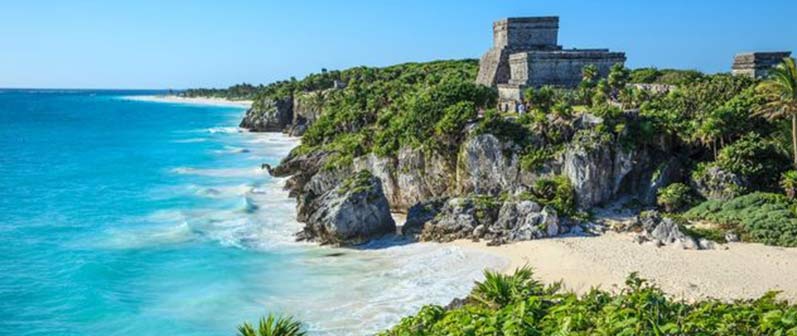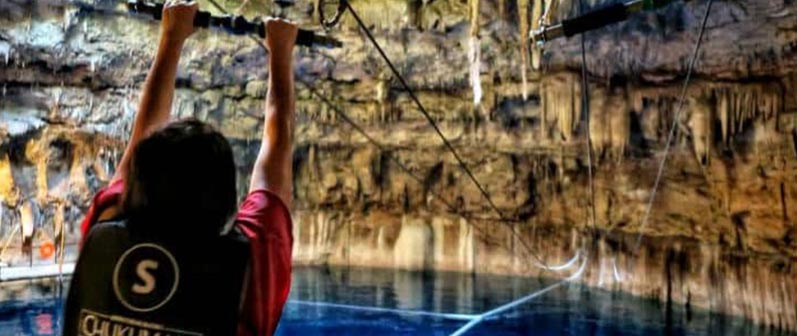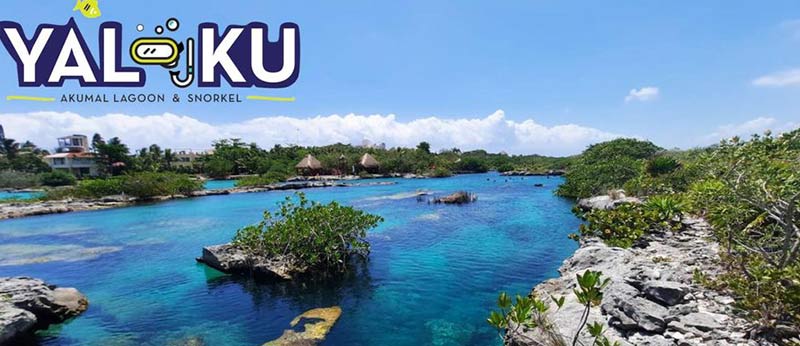Activities in Riviera Maya
The best activities in the Riviera Maya:
Trip to Chichen Itza
The Kukulcán pyramid rises with geometric precision in the middle of an esplanade that a thousand years ago was the political, religious and cultural center of the Mayan empire. Chichén Itzá means “mouth of the Itza well”, alluding to the cenote located to the north of the pyramid and which was considered a sacred enclave, as well as a source of essential fresh water for that city of temples and wise astronomers.
The archaeological site occupies 15 km2, has been a World Heritage Site since 1998 and constitutes one of the best preserved testimonies of the Mayan civilization. The study of the engravings and the arrangement of the buildings has revealed that the Mayans knew the cycle of Venus of 584 days and the fact that every 8 years it returned to the same position in the sky, which was reflected in the sky. Mayan calendar. The building that the Spanish called the Caracol was an astronomical observatory.
The location of the city, surrounded by jungle and more than 100 kilometers from the coast, plunges the visitor into a kind of dream that leads him between sensational monuments: the Ball Court, the road that leads to the Sacred Cenote, the sculptures of the god Chaac, the reliefs of the House of the Nuns or the heads of the Feathered Serpent (Quetzalcóatl or Kukulcán).
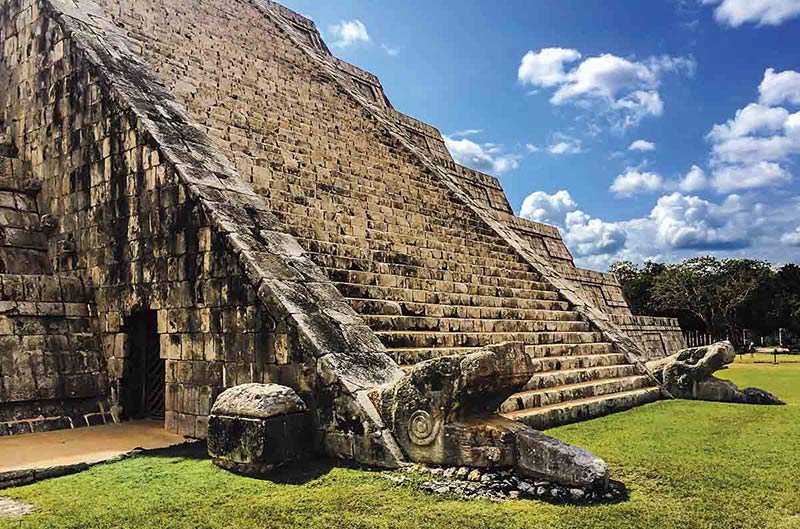
Recommended activity:
Mayan Ruins Tour in Tulum
In pre-Hispanic times, the ancient Mayan civilization flourished throughout the Yucatan Peninsula. In an interesting tour to Tulum you will discover the important role that this coastal city had for trade and cultural exchange between the different settlements of this ancient culture.
In addition to being a key piece to understand the economic and political functioning of the Mayan people, the ruins of Tulum are incomparably beautiful, they have a privileged view of the Caribbean Sea for being built on top of a cliff and they have the peculiarity of being protected by an enigmatic wall.
Enjoy the Cenotes
The Cenotes are a very important tourist attraction in the Yucatan Peninsula, Mexico, as the years go by they are visited more frequently, becoming more and more famous and loved by all those who visit them. However, there are still many people to be conquered by these beautiful natural pools.
Its name comes from the Mayan “tz’onot” means, cavern with water. It is said that the formation of the cenotes was in part due to the meteorite that killed the dinosaurs, because when it hit, it formed a series of caves that were left empty and this in turn has to do with the last ice age.
When the Yucatan peninsula was a coral reef covered by the sea, there came a point where sea levels dropped so much that they exposed the entire reef, causing it to die, eventually giving way to the jungle. tropical.
When the rain arrived, it began to mix with a large amount of carbon dioxide that existed in the atmosphere during that time, forming carbonic acid, altering its acidity when it made contact with the ground. When fresh water mixed with sea salt, it began to impact on the limestone rock gradually dissolving it, creating holes in it. Time passed and these holes began to expand their territory, creating tunnels and water passages, similar to the rivers that were on the surface.
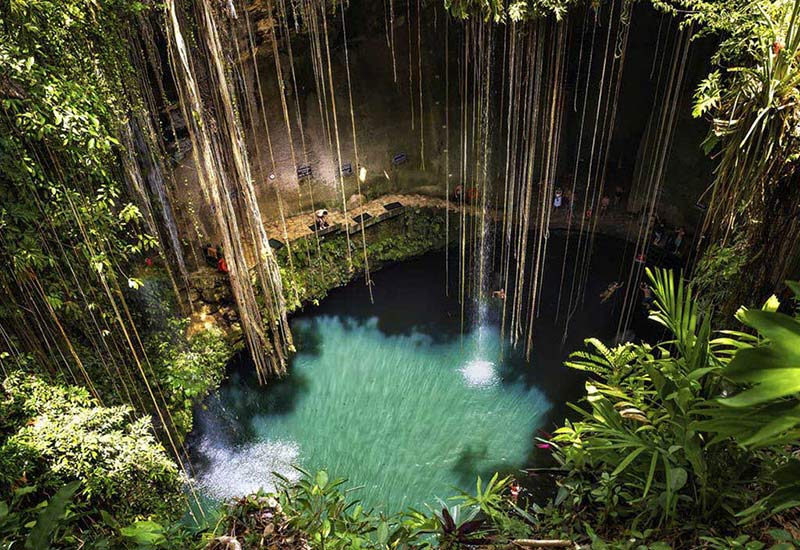
Recommended activity:
Hacienda Chukum
The underground cenote of the Hacienda Chukum park (more than 40 meters in diameter) has three natural openings in its roof that allow sunlight to illuminate its turquoise waters.
Thanks to its adaptation, this attraction offers several activities full of adrenaline for visitors.
Since the cenote is fully equipped with zip lines, three diving platforms built at different heights ranging from one to four meters above the water level.
In addition, Chukum-Ha has a rope swing and a rappel experience of more than 18 meters through one of the openings of the cavern into the water.
Snorker in Yucatan
There are no rivers in Yucatán, at least not above ground. Formed over the centuries, there is a unique underground system of rivers, lagoons, and caves caused by rainwater seeping through the porous limestone soil: cenotes. In Yucatan there are about three thousand cenotes. Cenotes vary in size, shape, depth, and accessibility. Some are several meters deep, others are dozens. Some are accessible via (built) ladders, others only by rope. In some of these cenotes you can snorkel (and in some dive). And that is a special experience.
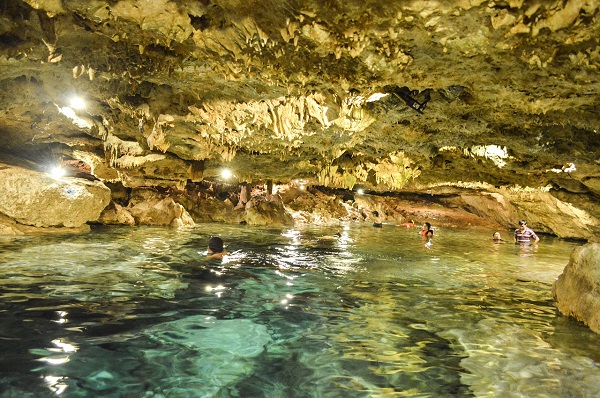
Recommended activity:
Yal ku
Yal-Ku is one of the Caribbean corners with which you will surely be surprised on your way. In this underground freshwater outlet to the open sea, you will enjoy incredible views. Discover among colorful fish one of the most beautiful landscapes of this paradisiacal coast of the Mexican southeast. While you swim in these irresistible crystalline waters, you will enjoy the life hidden by the roots of the mangroves, the birds in their habitat and a great variety of fish, in a place where two ecosystems merge where fauna and flora coexist between the salty and the sweet, two very different worlds.
Boat rides
The possibility of sailing with a boat or catamaran through the beautiful turquoise waters of the Riviera Maya coast is, of course, one of the best options to enjoy an unforgettable experience.
Sailing to places like Inah, Yalku, Yanten, Puerto Aventuras or Xpu Ha, will reveal to the traveler all the secrets of the Caribbean Sea.
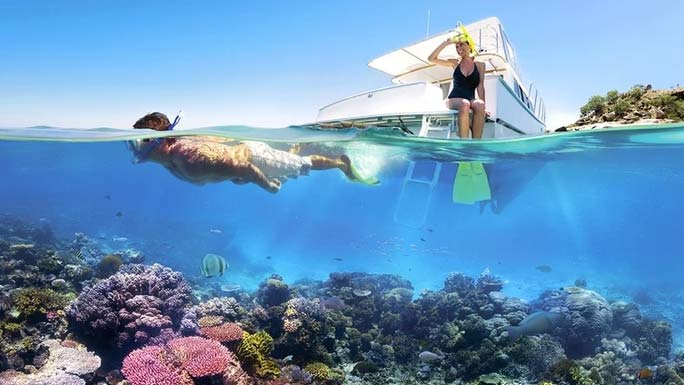
Recommended activity:
Blue Compass Charters
Live and explore the natural wonders that the Mexican Caribbean has to offer and let yourself relax by the majestic sun and the unique breeze of this paradise. Feel the true sense of freedom and the magic of our paradisiacal destinations. Be pampered by our unique crew, on a journey that will create memories for a lifetime. Blue Compass welcomes you aboard for a unique marine experience, taught by internationally certified crew members who grew up exploring and continue to enjoy these turquoise waters.

